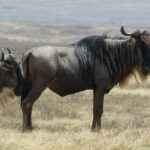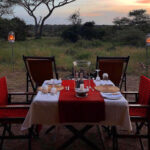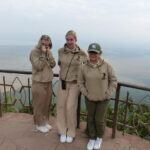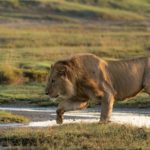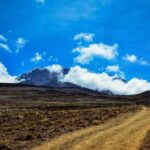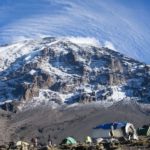Safari adventures for families can be thrilling, but did you know that safety is paramount? The excitement of seeing wildlife in its natural habitat is unmatched, but ensuring that everyone stays safe is crucial. Engaging in well-organized safaris with trained guides can make a world of difference.
The importance of safari safety dates back to early exploratory journeys, where guides were indispensable. Today, reliable statistics show that safaris planned systematically with expert advice have drastically reduced incidents. From maintaining a safe distance from animals to understanding the local ecosystem, these guidelines offer a treasure trove of practical advice for families.

Essential Safety Practices for Safari with Families
The magic of a safari is best enjoyed when families prioritize safety. A crucial first step is selecting a reputable tour company like Rolux Safaris, known for their expert guides and thorough safety protocols. Professional guides ensure that families maintain a safe distance from wildlife, minimizing risks. They also provide vital information about animal behavior. This knowledge helps in understanding how to act in different situations.
Preparing for weather and terrain is essential too. Safari environments can vary from hot and dusty plains to cooler highlands. Families should pack suitable clothing, hats, and sunblock. It’s also wise to carry water bottles at all times. Staying hydrated prevents heatstroke and keeps energy levels high.
Interaction with wildlife should be approached with respect and caution. Families must follow their guide’s instructions to avoid startling the animals. Keeping quiet and moving slowly can prevent unwanted attention from larger wildlife. Cameras with a good zoom function can capture great shots without getting too close. Observing from a safe distance is always the best practice.
Understanding emergency protocols can make a significant difference in case of unexpected situations. It’s important to know the location of the nearest medical facilities and have first aid supplies. Families should also be aware of the signals and procedures used by guides in emergencies. Having a communication plan ensures quick action if someone gets separated. Emergency preparedness can turn a scary moment into a manageable one.
Understanding the Role of Professional Guides
Professional guides are the backbone of any successful safari. Their extensive knowledge of wildlife behavior helps keep families safe during close encounters. Guides know which areas to avoid and which routes are safest. Their expertise can mean the difference between a thrilling adventure and a dangerous situation. They also share fascinating insights about the animals and environment.
A significant part of a guide’s role involves educating safari-goers. They teach families about the local ecosystem and how to respect it. This education helps in minimizing human impact on natural habitats. Guides also explain the importance of staying quiet and patient while observing wildlife. This enhances the experience and ensures safety for all.
Professional guides are trained in first aid and emergency procedures. In case of any accidents or unexpected medical issues, they are equipped to provide immediate assistance. Their training includes dealing with common safari-related health risks. Knowing that help is readily available can ease the concerns of many parents. This allows families to focus on enjoying their safari experience.
Role of the guides also includes helping to manage interactions within the group. They ensure everyone follows the rules and respects both wildlife and fellow travelers. This also maintains harmony and enhances the adventure. Clear communication and leadership are key qualities of professional guides. This cultivated trust creates a safer and more enjoyable environment for families.
Preparing for Weather and Terrain
Weather conditions can make or break a safari experience. Families need to prepare for a range of climates, from scorching heat to sudden rain. Lightweight, breathable clothing is essential to stay cool in hot weather. Bringing waterproof gear can prevent discomfort during unexpected downpours. Having the right attire ensures everyone remains comfortable and safe.
Footwear is crucial when navigating varied terrains. Sturdy boots provide better support and reduce the risk of injury. They also protect against bites from insects or encounters with thorny plants. Sandals are not recommended as they offer little protection and support. Proper shoes enhance mobility and safety during the trip.
Staying hydrated is another critical aspect of preparing for the terrain. Dehydration is a real risk in hot climates, so families should carry enough water. Snacks like energy bars can help maintain energy levels during long walks. Keeping everybody well-fed and hydrated ensures they can enjoy all planned activities.
It’s also wise to be aware of the terrain-specific challenges. In any area, there may be rough paths or steep inclines. Guides assist by selecting routes that match the group’s ability level, ensuring safety for all. Being prepared mentally and physically for diverse environments can enhance the safari experience. This preparation makes the adventure both enjoyable and memorable.
Wildlife Interaction Do’s and Don’ts
Interacting with wildlife on a safari requires a careful approach to ensure safety for both humans and animals. One essential do is to keep a safe distance from all animals. Following guide instructions about how close you can get is crucial. Another is to remain as quiet as possible to avoid startling them. These practices help maintain a peaceful and safe environment.
On the don’t side, avoid feeding the animals. Feeding them disrupts their natural diet and can make them dependent on humans. Additionally, animals might become aggressive if they expect food and don’t get it. Keeping food to yourself preserves the wildlife’s natural behaviors. It also keeps everyone safer.
Photographing wildlife is a popular activity, but it must be done with care. Do use a camera with a good zoom to avoid needing to approach too closely. Flash photography can disturb animals, so keep the flash off. Ensure your camera settings are appropriate to capture beautiful images from a safe distance. Capturing memories responsibly ensures minimal impact on the animals.
Another important do is to stay within designated areas. Safari parks and reserves have specific zones where tourists can move around freely. Venturing outside these zones can be dangerous for you and for the wildlife. Following established paths keeps everyone safe and preserves the habitat. Trust in the guidelines provided by park authorities.
If an animal approaches your vehicle, do not attempt to touch it. Keep all windows and doors securely closed. Wild animals can be unpredictable, and direct contact can provoke them. Observing them from the safety of your vehicle is the best practice. This protects both you and the animal from harm.
Respecting the natural environment is important for sustainable tourism. Don’t leave litter or waste behind. It’s crucial to keep the habitat clean and free from pollutants. Bringing a small bag for trash ensures that you leave no trace. This simple act helps in preserving the beauty and health of safari landscapes.
Selecting the Right Safari Operator: Rolux Safaris
Choosing the right safari operator can significantly influence your family’s experience. Rolux Safaris stands out due to its commitment to safety and memorable adventures. Their professional guides are trained and knowledgeable about the local wildlife. This ensures a safe and educational journey for all. Trusting their expertise makes for an enriching and secure experience.
One of the key factors in selecting a safari operator is reputation. Rolux Safaris is highly rated by previous clients for their exceptional service. Positive reviews reflect their dependable and enjoyable tours. Many families recommend them for their tailored family-friendly safaris. Satisfied customers are the best testament to their quality service.
Rolux Safaris offers diverse packages that cater to different needs. These include specific family-oriented tours, which focus on engaging activities for children. They also offer luxury and budget-friendly options. This variety means they can accommodate different preferences and financial situations. Customizable packages make planning your safari simple and convenient.
Another advantage of Rolux Safaris is their focus on sustainability. They take steps to minimize the environmental impact of their tours. This includes educating tourists about conservation efforts. Rolux Safaris supports local communities and wildlife preservation projects. Choosing them means supporting responsible tourism practices.
Providing excellent customer service is a priority for Rolux Safaris. They offer comprehensive pre-tour information and support. Any concerns or questions you may have are addressed promptly. During the safari, guides ensure a smooth and enjoyable experience. Their dedication to customer satisfaction ensures a memorable and hassle-free adventure.
Safety is at the forefront of their operations. Rolux Safaris implements rigorous safety protocols. Their vehicles are well-maintained and equipped with necessary safety gear. Guides are trained to handle emergencies efficiently. This guarantees peace of mind, allowing families to focus on the wonders of the safari.
Emergency Protocols for Family Safety on Safari
In case of an emergency during a safari, having clear protocols is vital for family safety. Guides should always brief tourists on emergency steps before starting the expedition. Knowing what to do in critical moments can save lives. Families should pay close attention to these instructions. Staying calm is the best first step in any emergency.
Communication is essential during any emergency. Each family should have a reliable way to contact the guides or authorities. Most safari vehicles are equipped with radios or satellite phones. It’s important to know how to use this equipment. Prompt communication can speed up rescue efforts.
Medical emergencies require immediate attention. All safari vehicles should have first aid kits that are fully stocked. Guides are trained in basic first aid to handle common injuries like cuts and bites. Knowing the location of the nearest medical facility is also crucial. Quick and effective first aid can make a big difference.
In the event of getting lost, having a set meeting point can be invaluable. Families should discuss and decide on this point before the safari begins. Staying in one place makes it easier to be found. It’s also important to have a whistle or other noise-making device. This can help guides locate lost family members more quickly.
Understanding animal behavior is also part of emergency preparedness. Sometimes animals may come too close to the vehicle. Families should know the correct actions to take in these situations. Listening to the guide’s commands and remaining still can help diffuse potential danger. These actions can keep everyone safe.
A checklist of emergency supplies can be helpful. Items to include are water, a flashlight, a map, and essential medications. Keeping these items organized and accessible ensures quick use in an emergency. Being prepared with the right supplies can significantly improve safety outcomes. This readiness supports a safer and more enjoyable safari experience.


